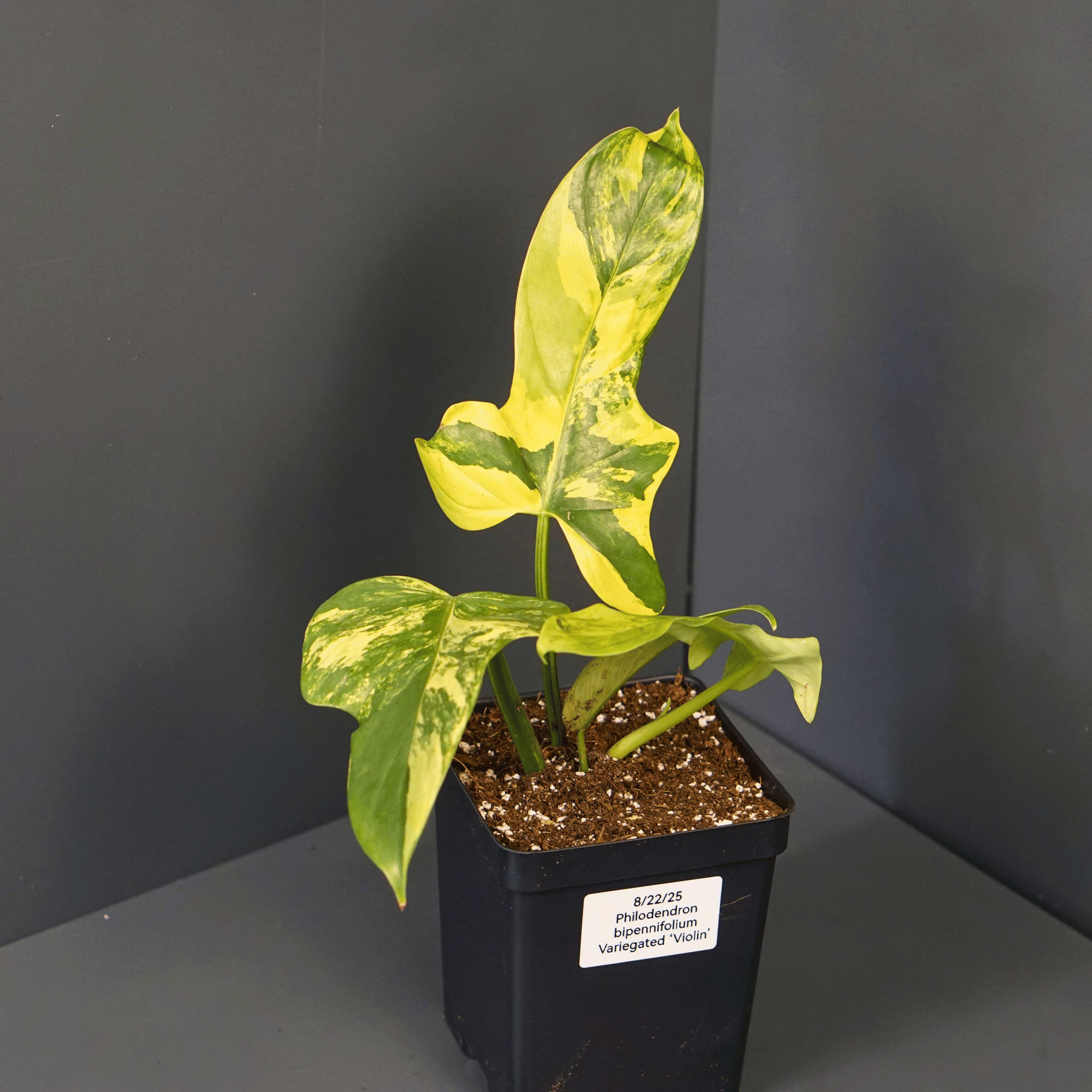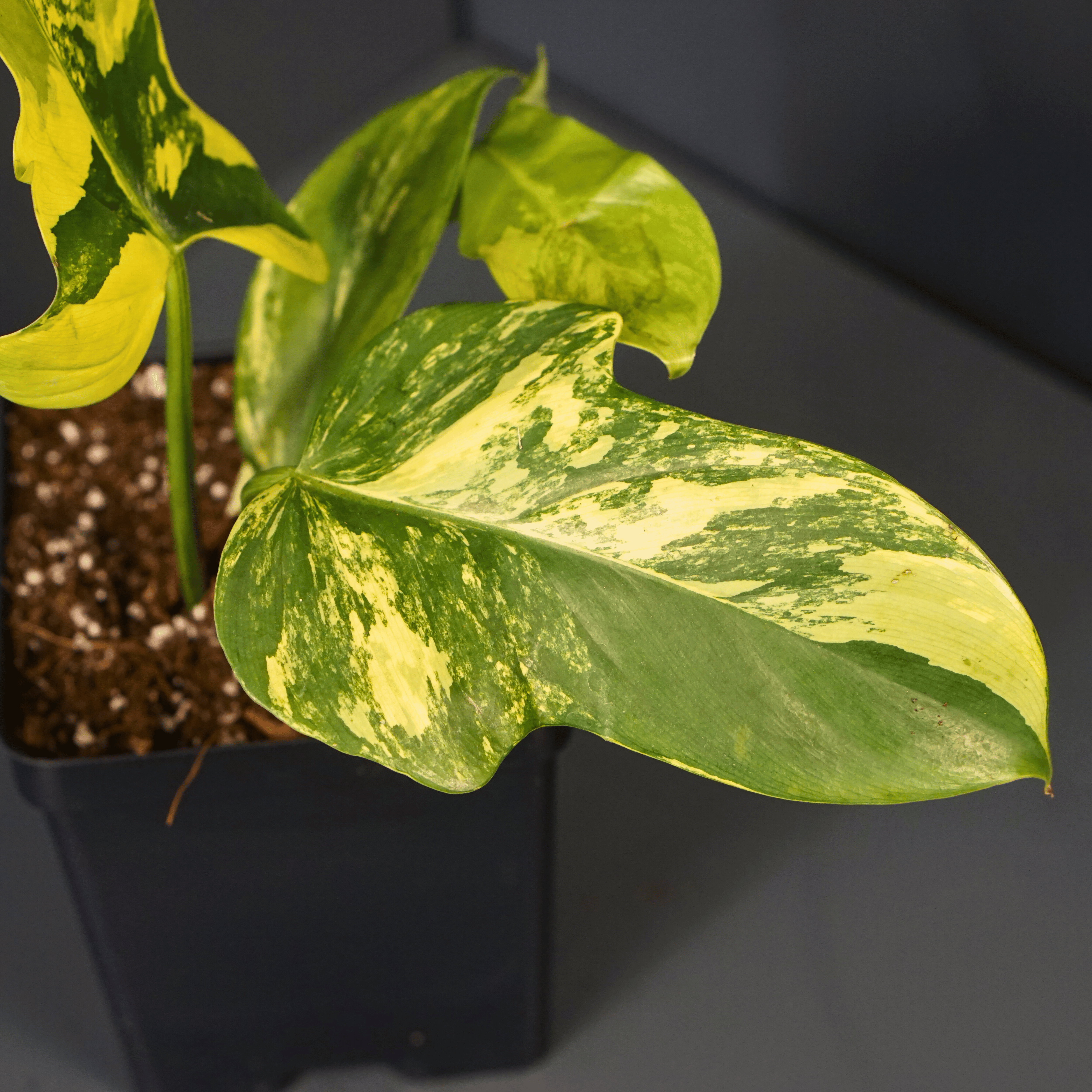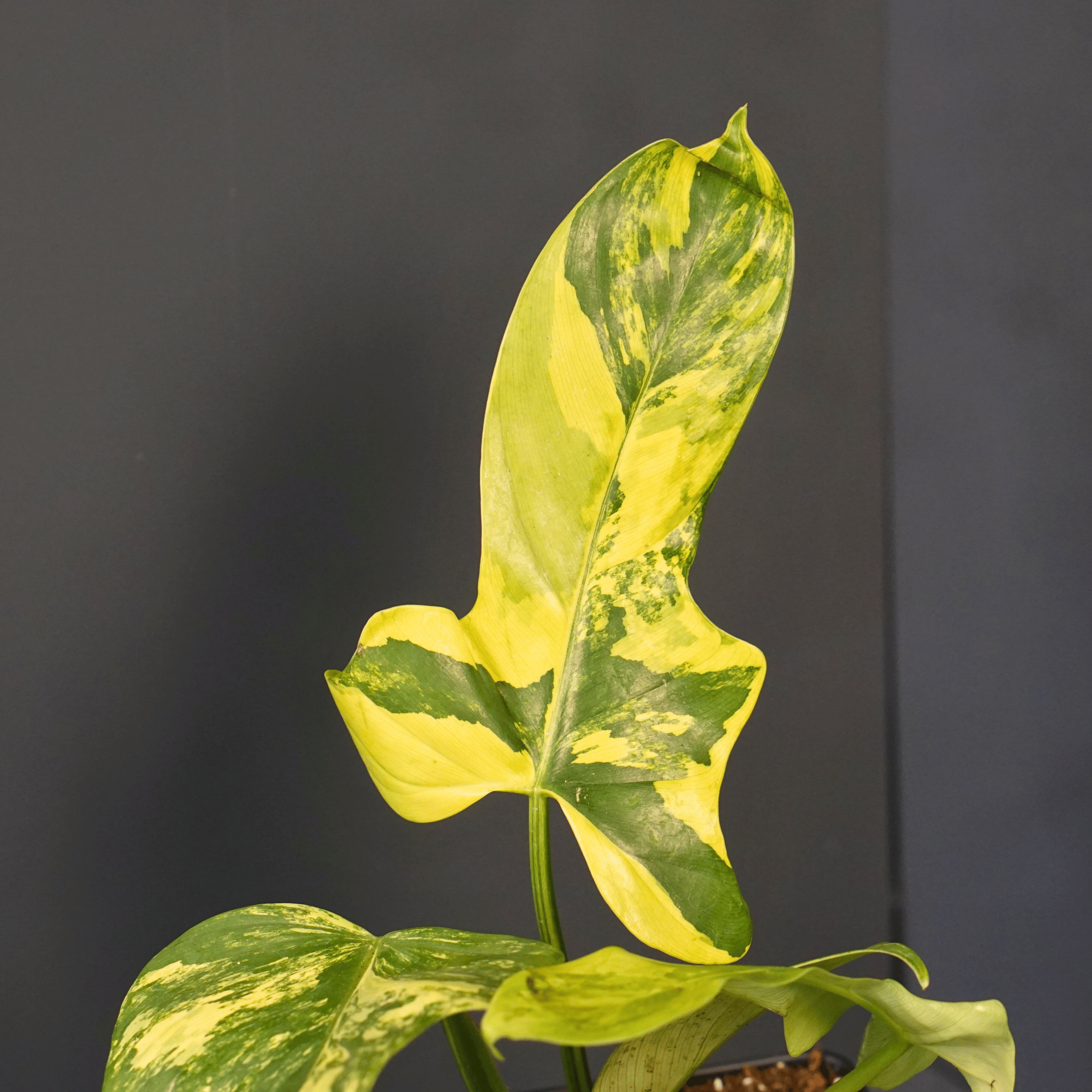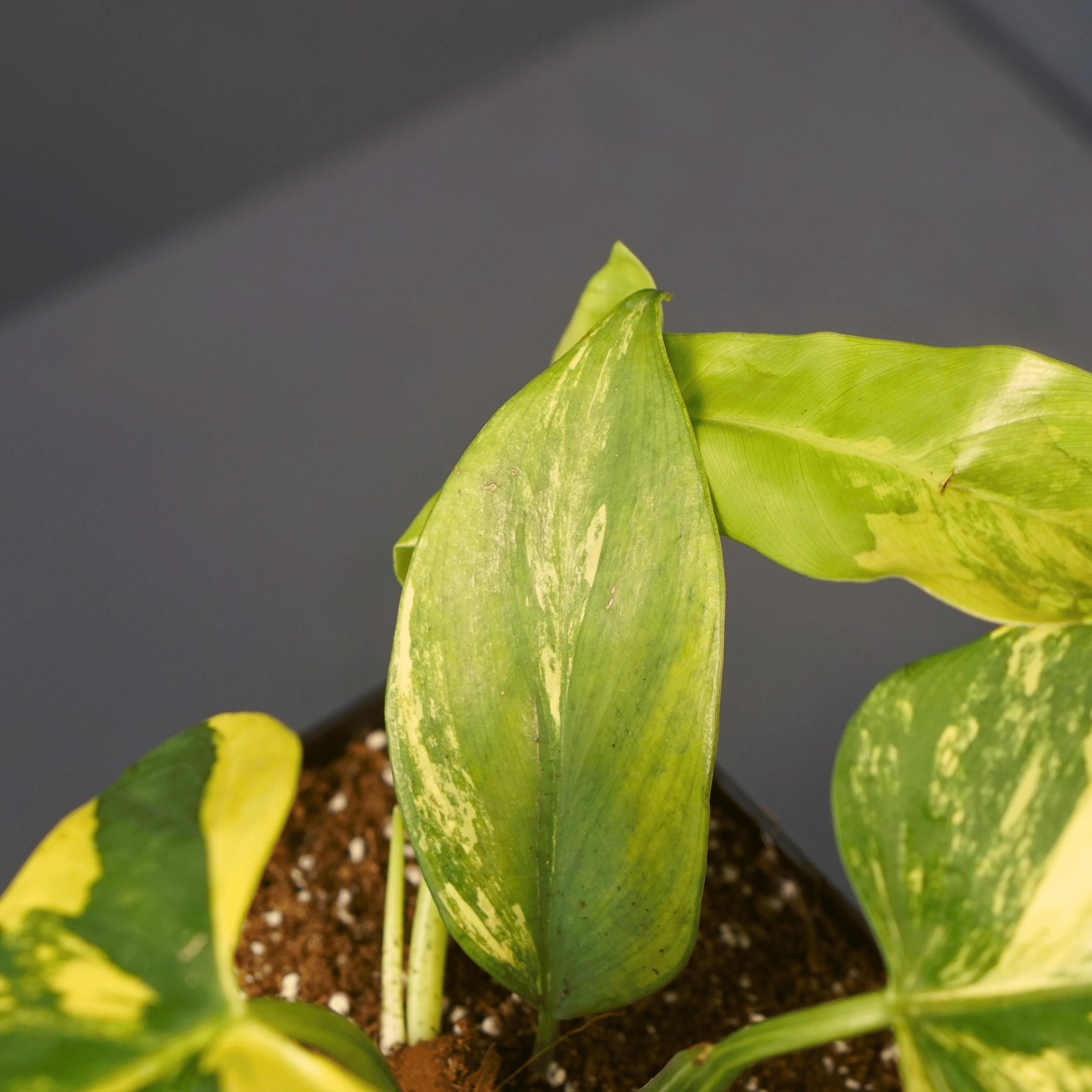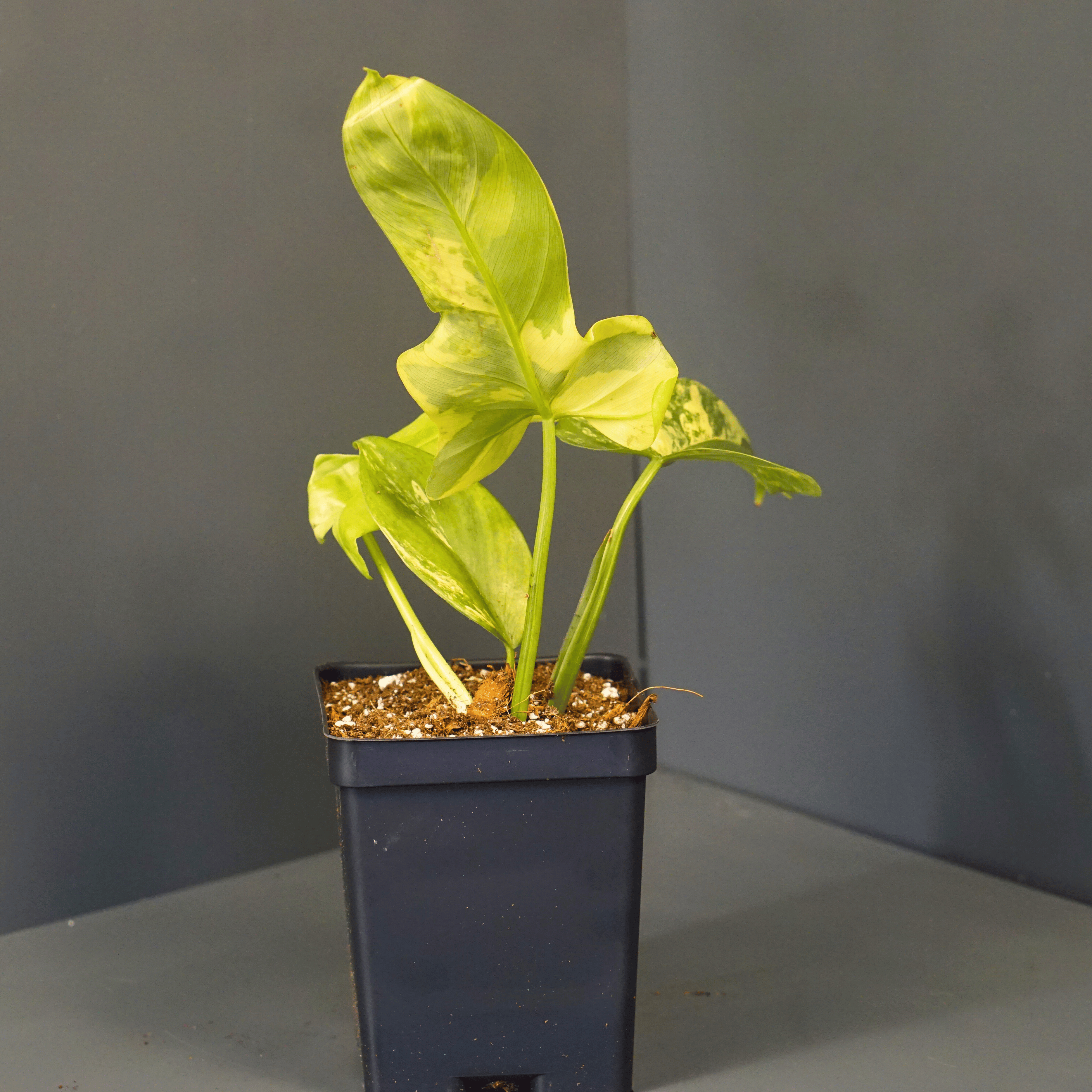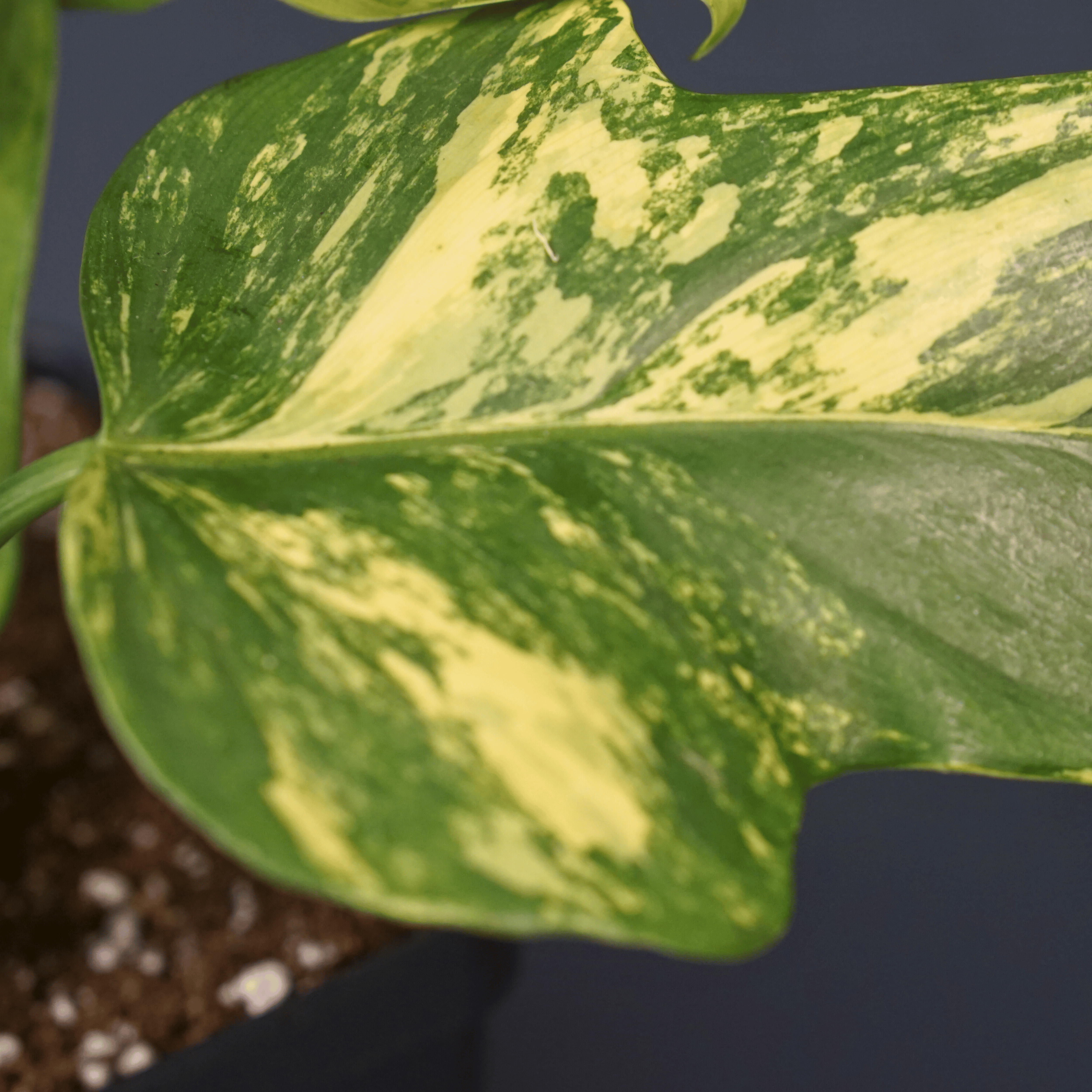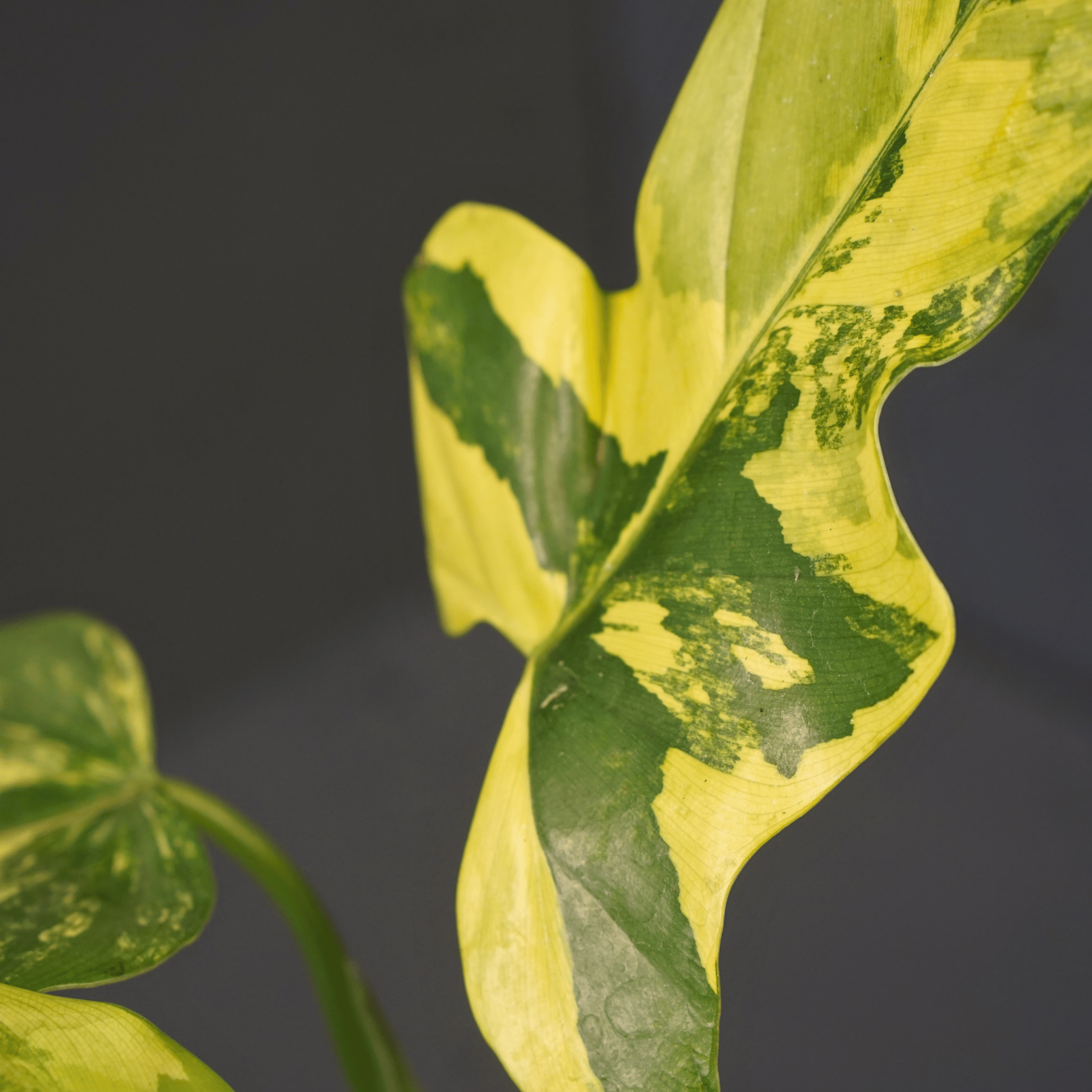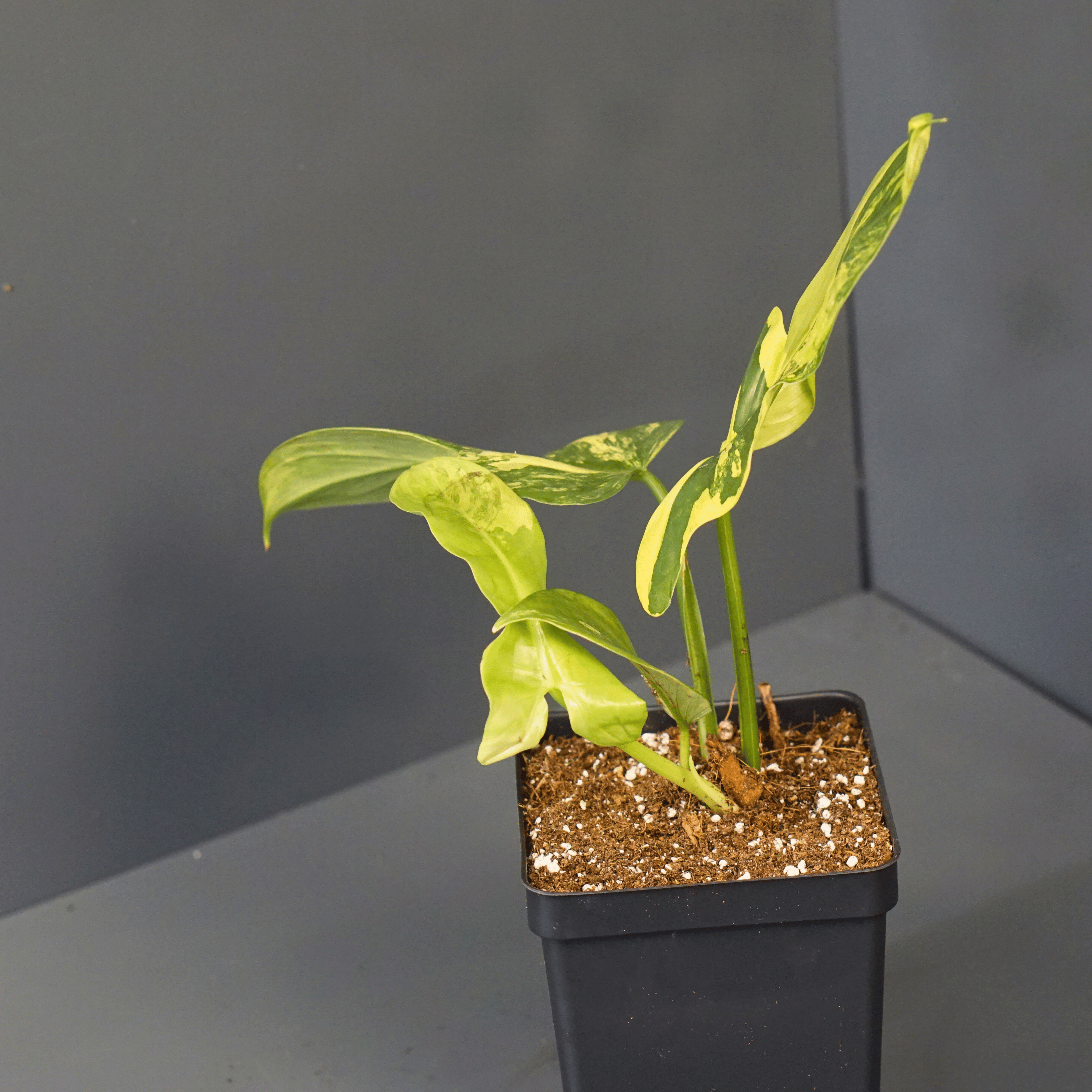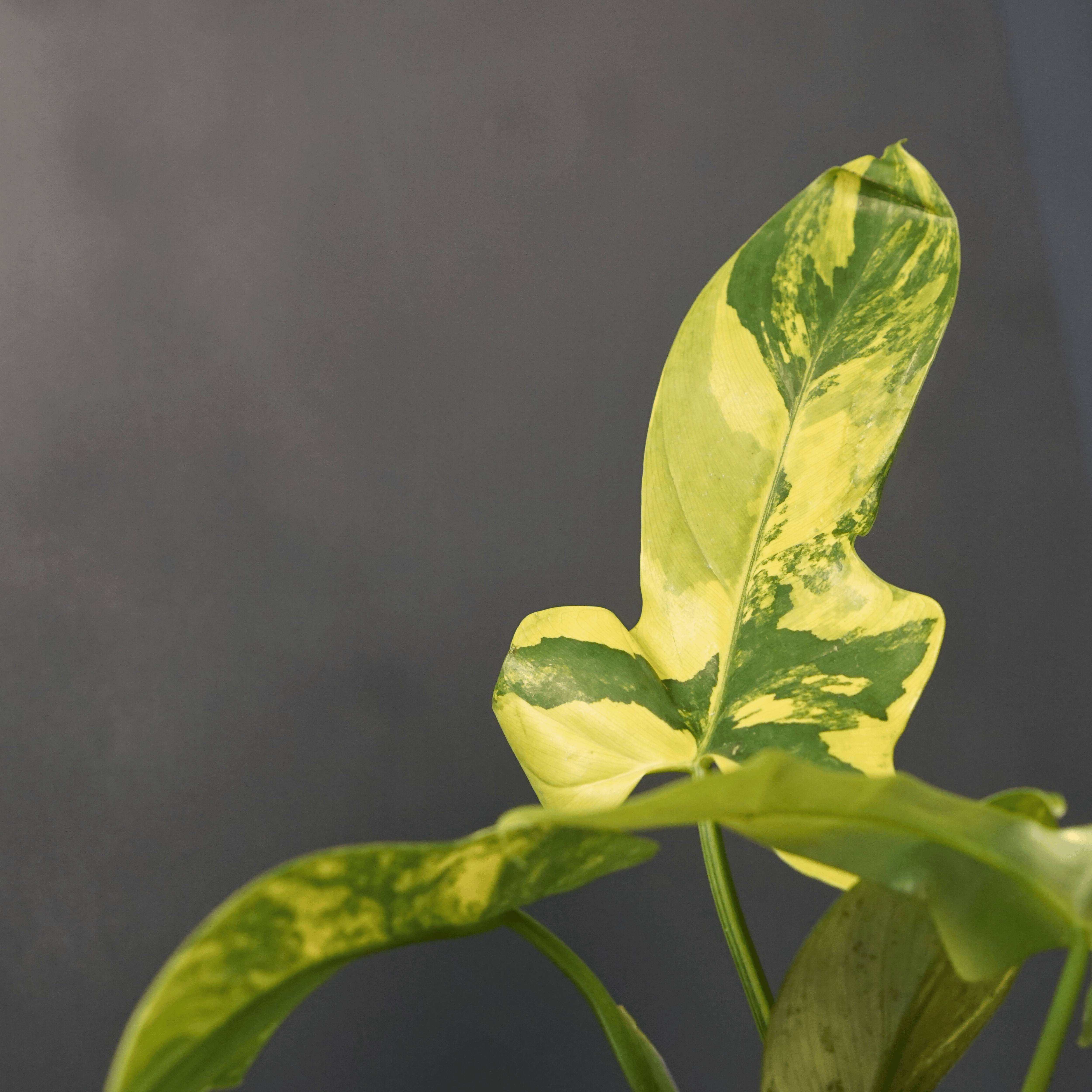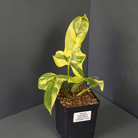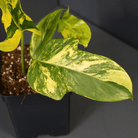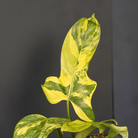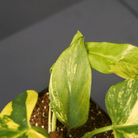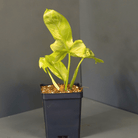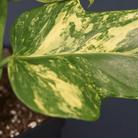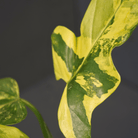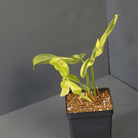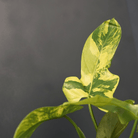Not your average violin.
Philodendron bipennifolium, often nicknamed the “horsehead” or “fiddle” philodendron, is already a sculptural standout—but the variegated form pushes it fully into collector territory. Expect bold white-to-cream marbling, splash, and sectoral blocks streaked across deeply lobed, exaggerated foliage.
This is a chimeric variegate, meaning each leaf expresses differently—some may be half white, others softly mottled, and the balance shifts as the plant grows. Variegated bipennifolium is also one of the few large-leaf climbers that retains its fenestrated energy while putting on real vertical size with age.
All plants are fully rooted in soil and offered in two formats:
-
Exact Plant – 4" Pot
What you see is what you get. Rooted, stable, and showing strong variegation and active growth. -
Grower’s Choice – 4" Pot
A healthy plant from our variegated bipennifolium stock. All selections show visible variegation, but pattern and distribution will vary leaf to leaf. No cuttings, no placeholders — just vetted, rooted plants.
This is a tropical climbing aroid suitable for pole growing or trailing, depending on your setup.
Philodendron bipennifolium (Variegated) Care Overview
| Requirement | Details |
|---|---|
| Light | Bright, indirect light. Enhances variegation but avoid direct sun. |
| Humidity | 60–80% preferred. Tolerates 50%+ but thrives in higher humidity. |
| Watering | Allow the top 1–2” of soil to dry between waterings. |
| Substrate | Well-draining aroid mix with peat, perlite, bark, and pumice. |
| Temperature | 65–85°F. Avoid exposure below 60°F. |
| Feeding | Fertilize monthly with a balanced formula during active growth. |
| Growth Habit | Climber. Provide a pole for larger leaves. |
| Pests to Watch | Spider mites and thrips. Wipe leaves regularly and monitor pale tissue. |
Shipping Note:
All plants ship rooted in soil and are packaged to minimize transit stress. Due to the broad leaves and pale variegation, some cosmetic damage may occur in transit — including minor yellowing, edge browning, or leaf curling. These do not affect the health of the plant and are not considered damage. Soil may shift slightly and can be gently resettled on arrival.
Our Live Delivery Guarantee
We stand behind every leaf and every mite. If your plant or predatory insects don’t arrive alive on the first delivery attempt, we’ll make it right.
Here’s what you need to know:
- Email us at info@fgmnnursery.com within 24 hours of delivery
- Include clear photos of the item and the shipping label
- Someone must be available to receive the package—plants and bugs don’t do well sitting in the sun, a mailbox, or the back of a delivery truck
For plants, we offer store credit if something goes wrong.
For predatory mites and beneficial insects, you’ll have the choice of a replacement shipment or store credit.
If you contact us after the 24-hour window, we may still be able to help—just know it’s handled case by case.
We pack with care, insulate when needed, and check the weather before shipping. But once it’s in transit, the fastest way to protect your order is to open it right away.

